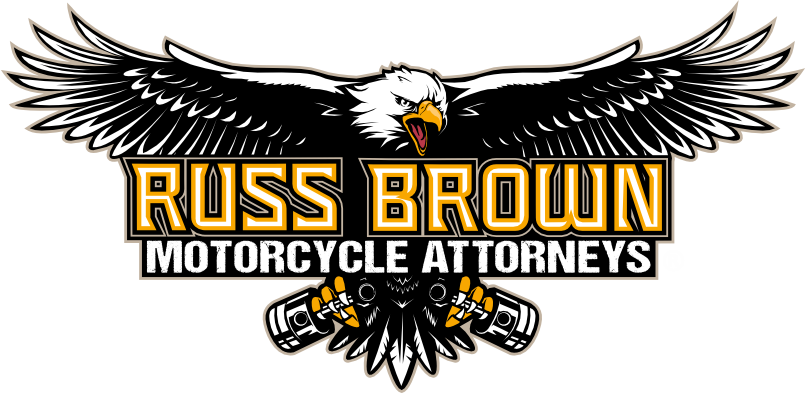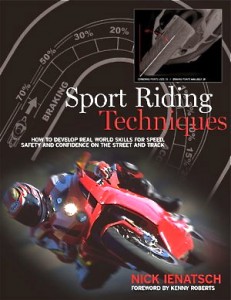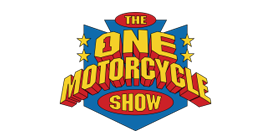Russ Brown Motorcycle Attorneys® Blog
When it comes to riding tips I can think of NO ONE more respected in the business than Nick Ienatsc, Chief Instructor at the Yamaha Champions Riding School (YCRS) and purveyor of Fastersafer.com. If you don’t have his book Sport Riding Techniques, get it, no matter what you ride.
Nick is straight shooter, who doesn’t edit his passion and love of the sport of motorcycling to fit into anyone’s politically correct box. I’ll share with you my conversation with Nick “Myth Busting: Radius and Miles per Hour.”
“Brenda, I try to keep my ‘Myth Busting’ from getting personal. But this isn’t tennis. One tennis coach teaches two-hand backhands. The other doesn’t. Is anyone gonna die from either of these coaches’ opinions? No.
Is anyone gonna die from bad riding advice? Yes. They already did. They will again this weekend.
There’s an Australian bike magazine I used to get. In it, the Editor writes terrific tips on everything from maintenance to city riding. I don’t know the guy, but I can sense his enthusiasm and I like it. But every now and then he ventures into performance-riding advice. Keep in mind that he has three or four columnists who are extremely well-known in the racing community because they are extremely successful, seriously talented. But despite this pool of talent on his staff, this Editor writes his own version of reality and physics, a version that falls apart in an awful mess just about the time a rider really needs it.
To be specific: This Editor wrote that you should increase throttle when you get into a turn too fast because the increasing throttle affects the bike’s swingarm geometry and will help the bike turn.
This is 100-percent incorrect. And you can prove it to yourself.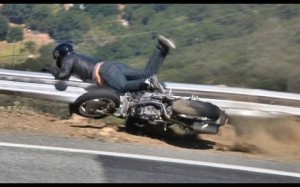
Get your bike into a parking lot and ride in a circle of any size. Hold constant throttle and constant lean angle to hold a constant radius. Now, gently roll-on the throttle and do your best to maintain the same lean angle (not the same radius, the same lean angle). What does your radius do? Tighten or open?
Now ride steady throttle and steady lean angle again. Gently close the throttle and maintain the same lean angle and pay attention to what your radius does.
Okay, go do that.
Are you back? So when I write and talk about “radius equals mph” you can now nod your head…not because I said so, but because you have proven it to yourself.
When you open the throttle in the circle, what would you have to do to maintain the same radius as steady throttle? Yes…add lean angle. We make a point on fastersafer.com and at YCRS to equate “lean angle” with “risk”. So increasing throttle wants to open your radius, but you are then adding risk to keep the bike on the same radius. Scary…and the faster you ride or the tighter the corner, the worse it gets. I want to teach you riding techniques that work when the pace is up or the grip is down.
The Editor’s version of what the bike was doing was about as wrong as it gets. Increasing throttle moves weight to the back of the bike, extending the forks and opening your steering-geometry numbers. Mile-per-hour comes up. The bike begins to run a wider radius at the same lean angle.
Are you beginning to see how new riders crash their brains out when presented with the instruction this Editor and others offer? “If you’re into the corner too fast, open the throttle and push on the inside bar.” That’s taken verbatim from a new rider’s school my friend attended.
Hello guardrail…or if you’re in a right-hand corner with oncoming traffic: Hello front bumper, windshield, roof, trunk, pavement, hospital…morgue?
This Editor’s written advice will sit around riders’ homes and public libraries for years. It will be passed on as gospel to sons, nieces, friends, students. And it’s wrong. Dead wrong.
Slowing a motorcycle tightens the radius of the corner at the same lean angle (risk). This Editor’s advice has a rider using the exact opposite control we are advising. We say, “When you get into a corner too fast, leave the throttle shut, feather your brakes, keep looking through the corner.” Accelerate? Only when you can see the exit and take away lean angle.
Please read that last paragraph again. Please…so we can improve this sport’s safety record, grow motorcycling and increase riding technique to the level of modern motorcycles and tires. You know what I’m beginning to believe? No riding advice is better than most of the riding advice we hear and read these days. Do any of you add throttle in your car/truck/bus/van/go-kart if you get into the corner too fast? No! Yet “riding instructors” and this Editor with a world-wide mouthpiece insist that you do.
They’re wrong…even in a parking lot.”
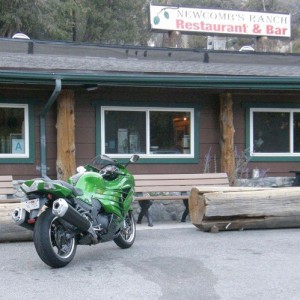
ZX14R photo credit: Nick Ienatsch Do you plan to ride the world’s fastest production motorcycle up on one of the world’s most-fun roads? If so, you must master the brakes because of this very simple mantra: More Speed, More Brakes. The upcoming corner won’t change for you, so you must adjust your speed to match its radius…and that means mastering the brakes. Speed isn’t the killer…the killer is a lack of control. No brakes is no control.
Nick always leaves me with good advice; things to ponder and things that weren’t making sense start to get bit more in focus.
Ride ON!
Brenda Fox
Russ Brown Motorcycle Attorneys® advocate motorcycle training. All motorcycle riders can benefit from skills courses. We don’t like to see riders getting into motorcycle accidents and we see it constantly. Russ Brown Motorcycle Accident Attorneys have been fighting for injured motorcyclists since 1975. If you have been injured in a motorcycle crash you need an experienced motorcycle lawyer, one who rides. Call motorcycle lawyer Russ Brown and get an experienced motorcycle injury attorney working for you. 1-800-4-BIKERS.
